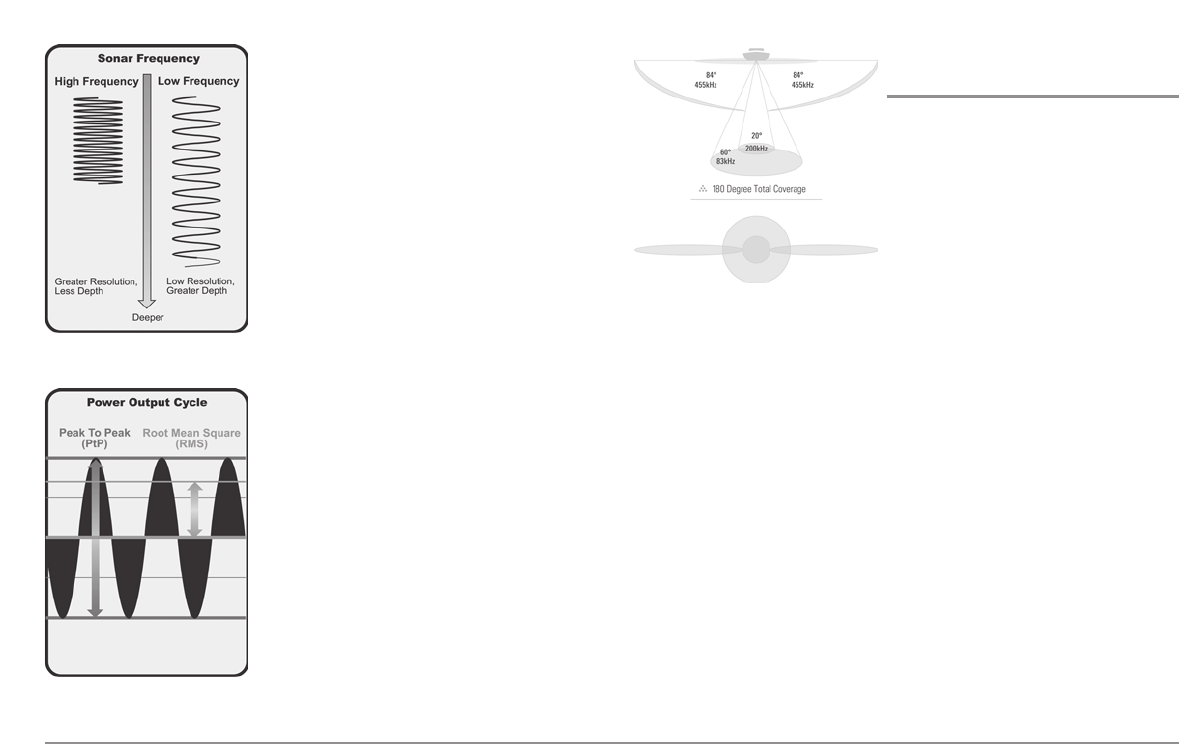
The sound pulses are transmitted at various
frequencies depending on the application.
Very high frequencies (455 kHz) are used for
greatest definition but the operating depth is
limited. High frequencies (200 kHz) are
commonly used on consumer sonar and
provide a good balance between depth
performance and resolution. Low frequencies
(83 kHz) are typically used to achieve greater
depth capability.
The power output is the amount of energy
generated by the sonar transmitter. It is
commonly measured using two methods:
• Root Mean Square (RMS) measures power
output over the entire transmit cycle.
• Peak to Peak measures power output at the
highest points.
The benefits of increased power output are
the ability to detect smaller targets at greater
distances, ability to overcome noise, better
high speed performance and enhanced depth
capability.
High Definition
Side Imaging Sonar
Your 900 Series™ 997c SI Combo uses
Side Imaging sonar to provide a wide yet
precise survey of a large area of water,
including detailed bottom topography
and fish-attracting structure orientation.
The Side Imaging transducer returns are
processed into an image similar to an
aerial photograph. Typically, the Side
Imaging sonar can search an area that
is 720 feet wide (360 to each side), with
a typical depth performance of 150
feet when the Side Imaging Sonar
frequency is set for 455kHz. The side
beams can be operated at one of two
frequencies: 455 kHz or 800 kHz.
Selecting 800 kHz produces the sharpest
image but the search area to each side
and the depth capability are limited as
compared to the 455 kHz frequency. See
What’s on the Side Imaging Display
and Understanding Side Imaging for
more information.
2


















